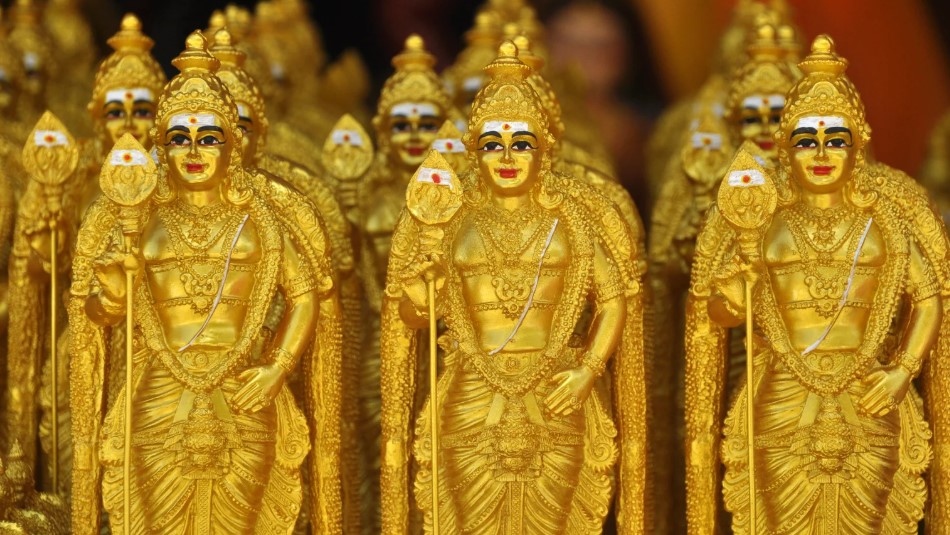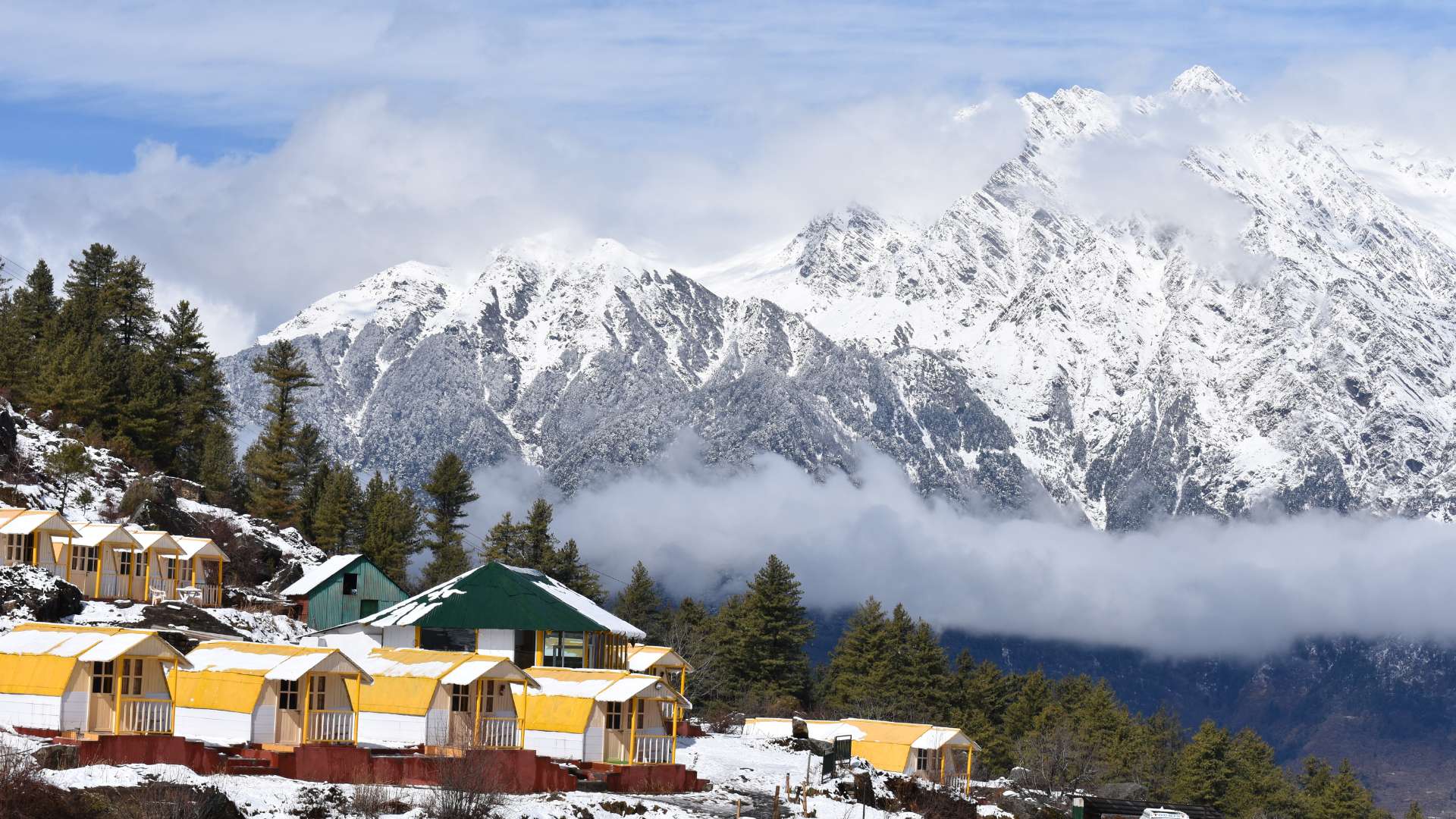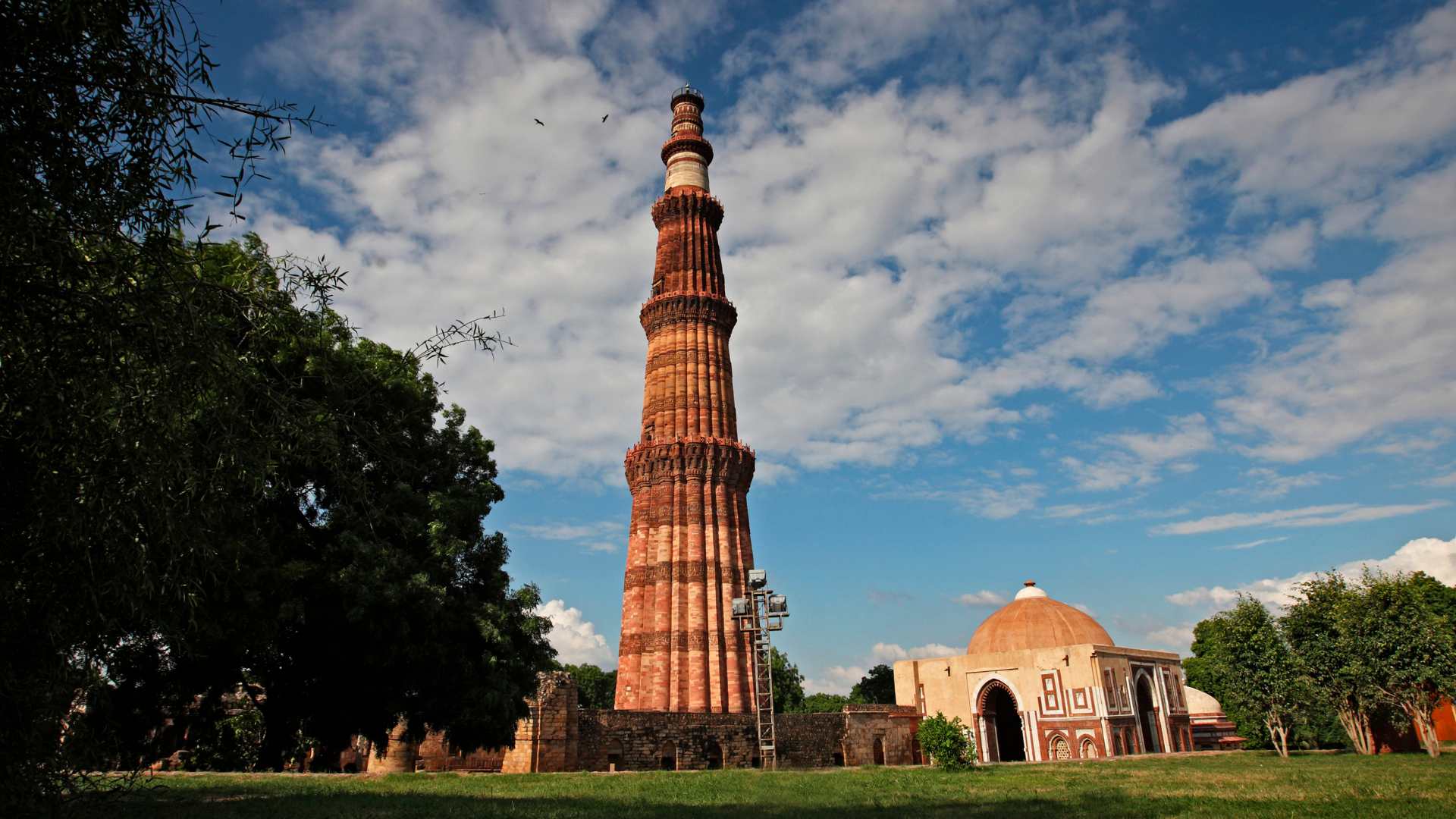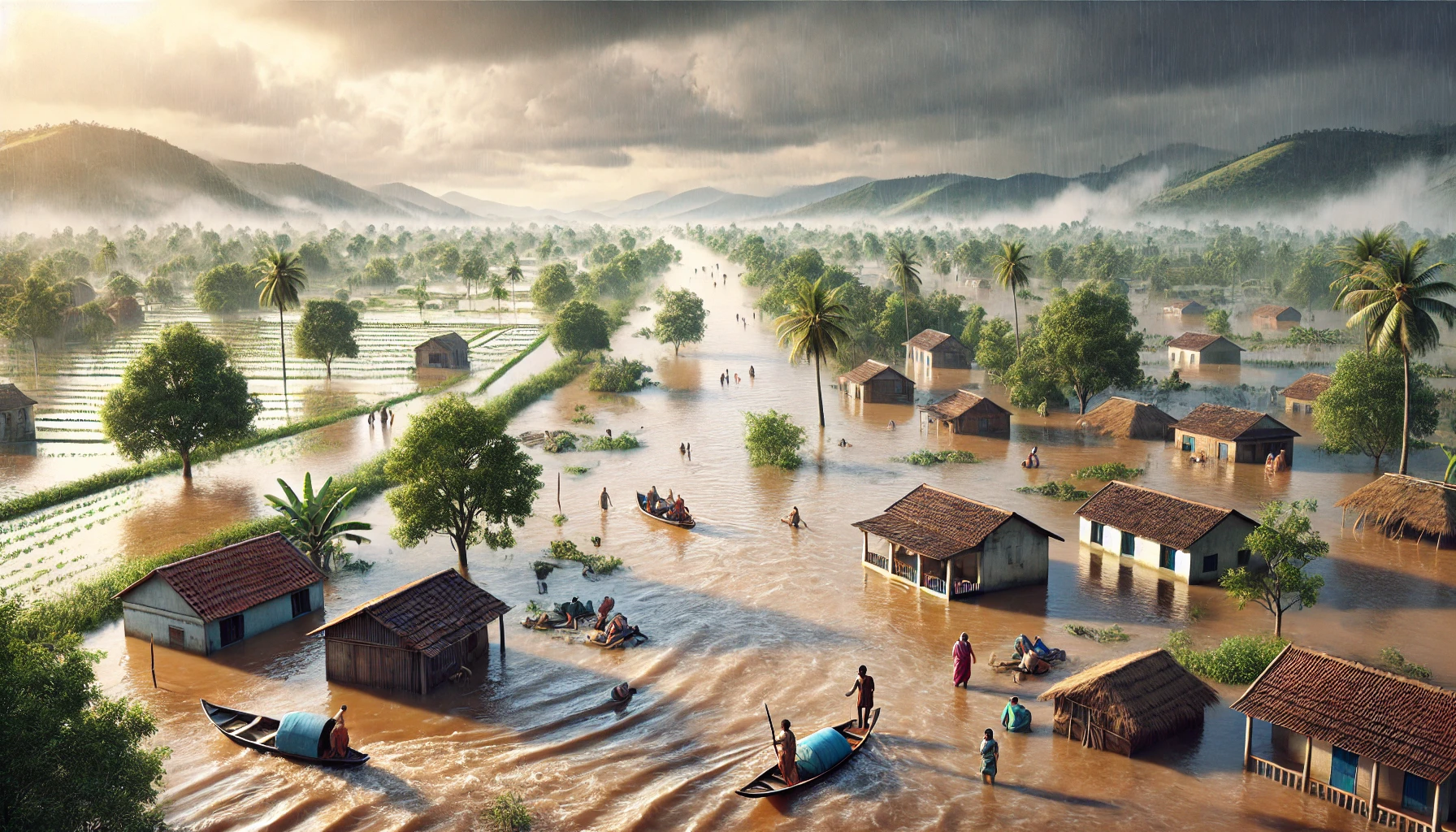Table of Contents
ToggleUttarakhand, often called the “Land of Gods,” is a region rich in culture and tradition, which is beautifully reflected in its attire. The traditional dresses of Uttarakhand vary across its Kumaon and Garhwal regions, each showcasing a unique blend of history, climate adaptation, and cultural pride.
From the elegant Pichora worn by women during weddings to the practical Dhoti-Kurta donned by men for everyday wear, these costumes tell stories of a deeply rooted heritage.
Uttarakhand’s traditional clothing is not just about fashion but a reflection of the people’s identity and connection to nature, especially with the incorporation of woollen attire suited for the cold Himalayan regions.
This article delves into the top 10 traditional dresses for both men and women, highlighting their significance in Uttarakhand’s culture.
Why is Traditional Dress Important in Uttarakhand’s Culture?
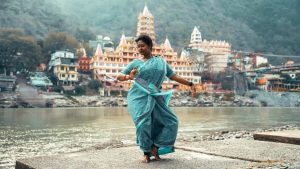
Traditional dress in Uttarakhand is a reflection of its rich cultural heritage and deep connection with nature. The clothing styles are influenced by the region’s geography, climate, and way of life.
For example, the use of wool in garments, such as Thalka or Bhotiya woollen dresses, is essential in protecting against the cold Himalayan climate.
Moreover, these attires, such as the Pichora for women or Dhoti-Kurta for men, are worn during festivals, weddings, and religious events, symbolising respect for tradition.
The intricate designs and handcrafted details showcase local craftsmanship, passed down through generations, preserving cultural identity. In essence, Uttarakhand’s attire represents a lifestyle that remains rooted in tradition while embracing changes.
How Do Uttarakhand’s Traditional Dresses Vary by Region?
Uttarakhand’s traditional dresses vary significantly between the Kumaon and Garhwal regions. In Kumaon, women often wear the Rangwali Pichora with a lehenga or ghagra during weddings and festivals, while men prefer Kurta-Pyjama with turbans.
In contrast, Garhwali women wear vibrant sarees tied differently from the rest of India, often paired with jewellery like Hansuli and Nath. The Jaunsari and Bhotiya tribes have distinct clothing styles, with woollen garments designed to endure the cold.
Each region’s clothing reflects its unique culture, geography, and traditional practices, providing insight into how the landscape and lifestyle influence fashion in Uttarakhand.
What Are the Common Fabrics and Textiles Used in Uttarakhand Traditional Dresses?
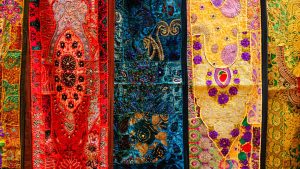
Fabrics used in Uttarakhand’s traditional attire are closely tied to the region’s geography and climate. Wool is one of the most common textiles, especially in higher-altitude areas, where garments like Thalka and Bhotiya dresses help protect against the cold.
Cotton is another widely used fabric, especially in warmer regions, offering breathability and comfort for everyday wear.
Silk and brocade are often used in special ceremonial garments like Pichora or wedding attire, adding a touch of luxury and tradition.
These fabrics are often embroidered with intricate zari work or mirror work, showcasing the artisanal skills of Uttarakhand’s weavers and craftsmen.
How Does the Climate Influence Uttarakhand’s Traditional Attire?
The diverse climate of Uttarakhand greatly influences its traditional attire. In the colder, higher-altitude regions like Garhwal and Kumaon, people wear woollen garments such as the Bhotiya tribe’s woollen coats and the Thalka, designed for warmth.
These clothes are thick and heavy to protect against freezing temperatures. In contrast, regions with warmer climates favour lighter fabrics, such as cotton, for everyday wear.
Dhoti-Kurta for men and Ghagra Choli for women are commonly worn in warmer areas, providing comfort and flexibility. The adaptive nature of Uttarakhand’s traditional clothing ensures that it is both functional and aesthetically rooted in cultural practices.
How Has Modern Fashion Influenced Uttarakhand’s Traditional Dresses?
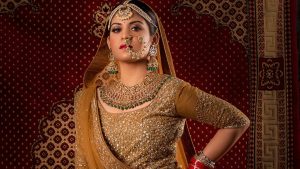
While traditional attire remains prominent in Uttarakhand, modern fashion has begun to blend with these age-old styles.
Younger generations have embraced elements of modern clothing while still retaining a connection to their roots. For instance, lighter versions of traditional Pichora and Ghagra have become popular in urban areas, designed for more casual, everyday use.
The use of modern fabrics and simplified designs allows for greater comfort while maintaining cultural significance.
Additionally, during festivals and weddings, people still prefer wearing traditional attire but with contemporary touches like fusion designs, illustrating how fashion evolves while respecting Uttarakhand’s cultural identity.
What Role Does Jewelry Play in Uttarakhand’s Traditional Attire?
Jewellery is an integral part of Uttarakhand’s traditional attire, especially for women. In Kumaon and Garhwal regions, pieces like the Nath (nose ring), Hansuli (neck ornament), and Guloband (a choker-like necklace) are essential, symbolising marital status, wealth, and community identity.
These ornaments are typically made of gold or silver and are worn during weddings, religious festivals, and special ceremonies.
Jewellery often complements traditional attire like the Pichora or Saree, enhancing the outfit’s overall cultural and aesthetic significance.
Even today, despite modern influences, traditional jewellery remains a treasured aspect of Uttarakhand’s cultural heritage.
Top 10 Uttarakhand Traditional Dress Male and Female
1. Pichora for Women
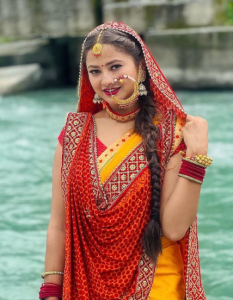
Image – Source
The Pichora is an iconic traditional dress worn by Kumaoni women, especially during religious festivals and weddings.
It is a yellow and red dupatta-like garment that is heavily embroidered with gold or silver, symbolising prosperity and joy. The dress is often passed down through generations, holding sentimental and cultural value in the region.
Pichoras are typically paired with a Ghagra (skirt) and a blouse adorned with intricate designs. The fabric is light, usually cotton, which makes it comfortable for daily wear.
Women wear it over their sarees during rituals or pujas. The bright colours, particularly red and yellow, symbolise good fortune and auspicious beginnings.
Pichora Details
| Attributes | Details |
| Dress Name | Pichora |
| Cultural Significance | Worn during weddings, festivals, and religious ceremonies |
| Fabric & Textiles | Cotton with gold or silver embroidery |
| Design Features | Bright colours and traditional patterns |
| Wearing Style | Draped over a saree or lehenga, over the head |
| Occasions for Use | Weddings, festivals, religious functions |
| Accessories | Paired with traditional jewellery like Nath and Guloband |
| Artisanal Heritage | Kumaon region, especially during Ganga Dussehra |
| Cultural Importance | Signifies prosperity, tradition, and good fortune |
| Modern Variations | Available with lighter fabrics and colours for daily use |
| Embroidery & Detailing | Zari work with gold or silver threads |
| Historical Roots | Roots in Kumaoni rituals and weddings |
| Popular Colors | Red, yellow, gold |
| Seasonal Adaptations | Cotton-based Pichora for all seasons |
| Regional Variations | Differences in embroidery styles across villages |
| Eco-Friendly Crafting | Some versions are made with natural dyes and fabrics |
| Comfort & Practicality | Lightweight and comfortable for long durations |
2. Dhoti and Kurta for Men
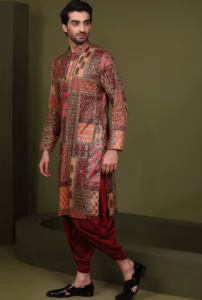
Image – Source
The Dhoti and Kurta are staple clothing items for men across Uttarakhand, worn daily and during formal events.
The dhoti is a long piece of cloth wrapped around the waist and tied securely, while the kurta is a knee-length tunic made from cotton, wool, or silk, depending on the occasion.
This attire reflects the simplicity and practicality of the region’s culture. The Dhoti-Kurta combination is breathable and well-suited to Uttarakhand’s climate, especially in the warmer months.
During winter, woollen or pashmina shawls are added to the outfit for warmth. For weddings, more luxurious versions of this attire with detailed embroidery and embellishments are used.
Dhoti and Kurta Details
| Attributes | Details |
| Dress Name | Dhoti and Kurta |
| Cultural Significance | Worn daily and during traditional ceremonies |
| Fabric & Textiles | Cotton, wool, or silk |
| Design Features | Simple and practical: embroidered versions for events |
| Wearing Style | Dhoti tied around the waist; kurta is worn as a tunic |
| Occasions for Use | Daily wear, festivals, weddings |
| Accessories | Paired with traditional shoes or juttis |
| Artisanal Heritage | Common throughout Uttarakhand |
| Cultural Importance | Represents simplicity and practicality |
| Modern Variations | Contemporary designs with lighter materials |
| Embroidery & Detailing | Occasionally embroidered for weddings |
| Historical Roots | Traditional dress rooted in ancient Indian customs |
| Popular Colors | White, cream, beige |
| Seasonal Adaptations | Cotton in summer, woollen shawls in winter |
| Regional Variations | Variations in fabric choices across different regions |
| Eco-Friendly Crafting | Cotton-based versions are eco-friendly |
| Comfort & Practicality | Lightweight and easy to wear for long durations |
3. Angrakha Attire for Men
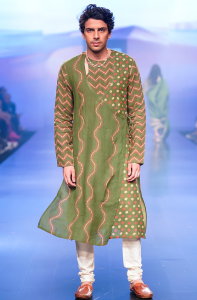
Image – Source
The Angrakha is a long, overlapping garment worn by men, particularly in the Garhwal region. It is tied at the side and paired with a dhoti or churidar.
Due to its rich appearance and intricate designs, the Angrakha is an elegant dress often worn on special occasions like festivals or weddings.
It is usually made from cotton or silk, sometimes velvet for winter months. Embellished with detailed embroidery, Angrakha is both comfortable and stylish. The garment is considered formal wear and symbolises status and tradition in Uttarakhand.
Angrakha Attire Details
| Attributes | Details |
| Dress Name | Angrakha |
| Cultural Significance | Worn during weddings and special ceremonies |
| Fabric & Textiles | Cotton, silk, velvet |
| Design Features | Overlapping front, tied at the side, intricate designs |
| Wearing Style | Paired with churidar or dhoti |
| Occasions for Use | Formal events, festivals, weddings |
| Accessories | Paired with traditional juttis or sandals |
| Artisanal Heritage | Rooted in Mughal influence on Garhwal fashion |
| Cultural Importance | Symbol of elegance and status |
| Modern Variations | Lighter materials are available for daily wear |
| Embroidery & Detailing | Detailed embroidery on collars and sleeves |
| Historical Roots | Traces back to Mughal-era India |
| Popular Colors | Maroon, white, cream, and blue |
| Seasonal Adaptations | Velvet versions for winter, lighter fabrics for summer |
| Regional Variations | Embroidery styles differ across regions |
| Eco-Friendly Crafting | Cotton versions use sustainable practices |
| Comfort & Practicality | Elegant yet comfortable, suitable for long durations |
4. Rangwali Pichora for Kumaoni Women
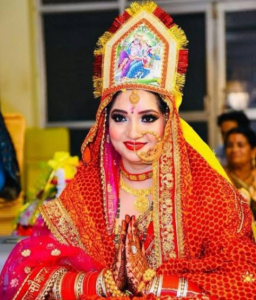
Image – Source
The Rangwali Pichora is a signature attire for Kumaoni women, especially for weddings and religious festivals.
This traditional dupatta or shawl is brightly coloured red and yellow, representing auspiciousness. It is heavily adorned with gold or silver embroidery, symbolising prosperity and happiness in the Kumaon region.
Rangwali Pichora is usually worn with a lehenga or saree during important ceremonies. Its lightweight and breathable fabric makes it comfortable for day-long events.
This dress is often accessorized with traditional jewelry like Nath (nose ring) and Hansuli (necklace), adding to the grandeur of the attire.
Rangwali Pichora Details
| Attributes | Details |
| Dress Name | Rangwali Pichora |
| Cultural Significance | Worn during weddings and religious festivals |
| Fabric & Textiles | Cotton with intricate gold or silver embroidery |
| Design Features | Bright colours with embroidered floral patterns |
| Wearing Style | Draped over a lehenga or saree, covering the head |
| Occasions for Use | Weddings, religious ceremonies, special events |
| Accessories | Paired with Nath, Hansuli, and other traditional jewellery |
| Artisanal Heritage | Kumaon region, Uttarakhand |
| Cultural Importance | Symbolises good fortune and prosperity |
| Modern Variations | Lighter versions with simpler embroidery are available |
| Embroidery & Detailing | Zari work with detailed floral and geometric designs |
| Historical Roots | Worn during festivals for centuries in Kumaon |
| Popular Colors | Red, yellow, orange |
| Seasonal Adaptations | Suitable for all seasons |
| Regional Variations | Embroidery patterns vary by village |
| Eco-Friendly Crafting | Some are crafted with natural dyes and organic cotton |
| Comfort & Practicality | Lightweight and ideal for long ceremonies |
5. Bhotiya Tribal Costumes
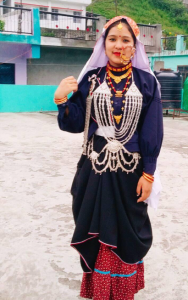
Image – Source
The Bhotiya tribe of Uttarakhand, which lives near the Indo-Tibetan border, is known for its distinct and practical traditional attire.
Their costumes are mainly woollen, reflecting the cold climate of the region. Men wear woollen coats and trousers, while women wear Bakhu, a loose-fitting woollen dress.
These woolen dresses, with intricate patterns woven into them, are designed to provide warmth and comfort. The Bhotiya women also wear colorful chubas (woollen robes) paired with silver ornaments.
The attire signifies the tribe’s deep connection with their Tibetan roots and the region’s harsh weather conditions.
Bhotiya Tribal Costumes Details
| Attributes | Details |
| Dress Name | Bhotiya Tribal Costumes |
| Cultural Significance | Traditional wear of the Bhotiya tribe in Uttarakhand |
| Fabric & Textiles | Wool, pashmina |
| Design Features | Loose-fitting woollen garments with intricate designs |
| Wearing Style | Bakhu for women, woollen trousers and coats for men |
| Occasions for Use | Daily wear and religious occasions |
| Accessories | Paired with silver ornaments |
| Artisanal Heritage | Deep Tibetan influence in garment designs |
| Cultural Importance | Practical attire for the cold Himalayan region |
| Modern Variations | Lighter woollen fabrics for daily wear |
| Embroidery & Detailing | Wool embroidery with geometric and tribal patterns |
| Historical Roots | Rooted in Tibetan culture and traditions |
| Popular Colors | Dark shades of brown, grey, and black |
| Seasonal Adaptations | Thick, woollen versions for winter |
| Regional Variations | Different embroidery styles across Bhotiya settlements |
| Eco-Friendly Crafting | Natural wool from local sheep |
| Comfort & Practicality | Warm, comfortable, and ideal for cold climates |
6. Garhwali Wedding Attire
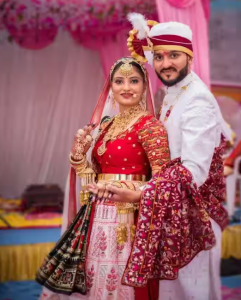
Image – Source
Garhwali wedding attire is a vibrant and colourful ensemble worn by brides and grooms in the Garhwal region.
The bride typically wears a heavily embroidered lehenga, dupatta, and a blouse made from luxurious fabrics like silk. Red is considered auspicious, and gold embroidery is common in bridal garments.
Grooms wear a traditional sherwani with a turban, usually in cream, maroon, or gold shades. The attire is accessorised with traditional jewellery such as maths, globals, and elaborate necklaces for the bride.
This costume represents Garhwal’s rich cultural heritage and elaborate wedding customs.
Garhwali Wedding Attire Details
| Attributes | Details |
| Dress Name | Garhwali Wedding Attire |
| Cultural Significance | Worn during wedding ceremonies |
| Fabric & Textiles | Silk, brocade, and cotton |
| Design Features | Heavy embroidery and zari work |
| Wearing Style | Brides wear lehenga dupatta; grooms wear sherwani |
| Occasions for Use | Primarily worn during wedding events |
| Accessories | Paired with traditional jewellery such as maths and global |
| Artisanal Heritage | Garhwal region’s wedding craftsmanship |
| Cultural Importance | Symbolises tradition and cultural pride |
| Modern Variations | Lighter lehengas for reception functions |
| Embroidery & Detailing | Zari and beadwork on bridal outfits |
| Historical Roots | Centuries-old wedding customs in Garhwal |
| Popular Colors | Red, gold, and maroon for brides; cream gold for grooms |
| Seasonal Adaptations | Heavier fabrics for winter weddings |
| Regional Variations | Different embroidery patterns between Kumaon and Garhwal |
| Eco-Friendly Crafting | Silk and cotton from sustainable sources |
| Comfort & Practicality | Comfortable yet grand, suitable for long ceremonies |
7. Woollen Clothes for Cold Regions
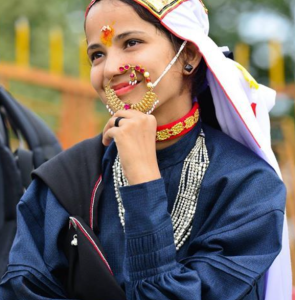
Image – Source
In the cold, mountainous regions of Uttarakhand, woollen clothes are essential for daily life. Wool is sourced locally, and the attire often includes thick woollen shawls, sweaters, and coats.
These garments are woven by hand, maintaining a strong connection to traditional artisanal practices.
Both men and women wear these woollen clothes, especially in high-altitude areas. Women wear woollen phirans (long woollen tunics), while men wear woollen waistcoats and trousers.
The woollen attire is practical and holds cultural significance, showcasing the skill of local artisans.
Woollen Clothes Details
| Attributes | Details |
| Dress Name | Woollen Clothes |
| Cultural Significance | Essential wear in cold, high-altitude regions |
| Fabric & Textiles | Wool, pashmina |
| Design Features | Thick woollen fabrics with handwoven patterns |
| Wearing Style | Shawls, waistcoats, phirans, and trousers |
| Occasions for Use | Daily wear in colder regions |
| Accessories | Paired with woollen scarves and hats |
| Artisanal Heritage | Handwoven by local weavers in Uttarakhand |
| Cultural Importance | Represents traditional wool-crafting skills |
| Modern Variations | Lighter woollen fabrics for less harsh climates |
| Embroidery & Detailing | Geometric and tribal designs on shawls |
| Historical Roots | Ancient weaving practices passed down generations |
| Popular Colors | Earth tones, dark shades |
| Seasonal Adaptations | Thick wool for winter, lighter wool for autumn |
| Regional Variations | Differences in weaving patterns across villages |
| Eco-Friendly Crafting | Made from local, eco-friendly wool |
| Comfort & Practicality | Warm and practical, ideal for harsh winters |
8. Ghagra Choli for Women
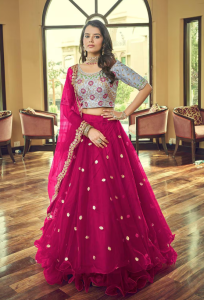
Image – Source
The Ghagra Choli is a vibrant and traditional outfit worn by women in Uttarakhand, especially in the Garhwal and Kumaon regions.
The Ghagra is a long, flared skirt, often made of cotton or silk, embellished with intricate mirror work or embroidery. It is paired with a Choli, a blouse that features deep front necklines, adding a unique charm to the outfit.
This attire is usually complemented with a dupatta draped over the shoulders or head, symbolising modesty and tradition.
The Ghagra Choli is worn during festivals, weddings, and other cultural ceremonies, showcasing the state’s rich heritage.
Ghagra Choli Details
| Attributes | Details |
| Dress Name | Ghagra Choli |
| Cultural Significance | Worn during weddings and festivals |
| Fabric & Textiles | Cotton, silk with embroidery and mirror work |
| Design Features | Flared skirt, deep neck blouse, and embroidered dupatta |
| Wearing Style | Paired with a dupatta draped over the shoulders |
| Occasions for Use | Cultural events, weddings, festivals |
| Accessories | Traditional jewellery like Nath, bangles, and anklets |
| Artisanal Heritage | Handcrafted in Garhwal and Kumaon regions |
| Cultural Importance | Represents elegance and cultural pride |
| Modern Variations | Available in lighter fabrics for casual use |
| Embroidery & Detailing | Mirrorwork and detailed embroidery |
| Historical Roots | Worn in Garhwali and Kumaoni communities for centuries |
| Popular Colors | Red, green, blue |
| Seasonal Adaptations | Lighter versions for summer |
| Regional Variations | Variations in embroidery across Uttarakhand |
| Eco-Friendly Crafting | Made using sustainable fabrics and natural dyes |
| Comfort & Practicality | Comfortable yet graceful, suitable for long events |
9. Kurta Pyjama for Men
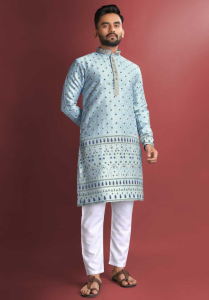
Image – Source
The Kurta Pyjama is one of the most popular traditional outfits men wear in Uttarakhand. It is a long tunic-like garment made of cotton or silk, typically reaching the knees.
It is paired with Pyjamas, loose-fitting trousers ideal for comfort and movement, especially in Uttarakhand’s rugged terrain.
This simple yet elegant attire is worn during everyday activities as well as special occasions.
During weddings and festivals, more elaborate versions with embroidery or silk fabrics are used. The outfit is usually complemented with a Topi or Pagdi (turban) for formal events.
Kurta Pyjama Details
| Attributes | Details |
| Dress Name | Kurta Pyjama |
| Cultural Significance | Worn for daily use and during festivals |
| Fabric & Textiles | Cotton, silk |
| Design Features | Knee-length tunic with loose trousers |
| Wearing Style | Worn with a traditional topi or turban |
| Occasions for Use | Daily wear, weddings, cultural festivals |
| Accessories | Paired with traditional footwear like juttis |
| Artisanal Heritage | Common across Uttarakhand regions |
| Cultural Importance | Represents comfort and tradition |
| Modern Variations | Available in lighter materials for casual wear |
| Embroidery & Detailing | Sometimes, it includes detailed embroidery for events |
| Historical Roots | A traditional dress was worn for centuries |
| Popular Colors | White, beige, cream |
| Seasonal Adaptations | Cotton for summer, wool for colder months |
| Regional Variations | Differences in fabric and style between Kumaon and Garhwal |
| Eco-Friendly Crafting | Some versions use natural, eco-friendly dyes |
| Comfort & Practicality | Lightweight, perfect for long wear and travel |
10. Thalka or Lohiya for Women
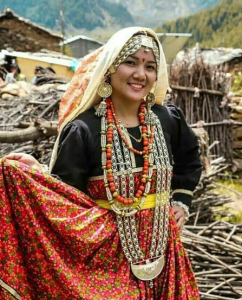
Image – Source
The Thalka or Lohiya is a long coat-like garment worn by women in Uttarakhand, particularly in the Kumaon region, during special occasions.
It is made of wool or thick cotton and provides warmth in the colder months. Beautiful embroidery or lacework often adorns it, adding elegance to its design.
Women usually wear the Thalka over their regular attire, such as Ghagra Choli or Sarees, during festivals or traditional ceremonies.
It represents not only protection from the cold but also the deep-rooted cultural traditions of the region.
Thalka or Lohiya Details
| Attributes | Details |
| Dress Name | Thalka or Lohiya |
| Cultural Significance | Worn during festivals and traditional ceremonies |
| Fabric & Textiles | Wool, thick cotton |
| Design Features | Long coat with embroidery or lacework |
| Wearing Style | Worn over traditional attire like Ghagra or Saree |
| Occasions for Use | Special events, weddings, festivals |
| Accessories | Paired with traditional jewellery |
| Artisanal Heritage | Woven and embroidered in the Kumaon region |
| Cultural Importance | Represents warmth and tradition |
| Modern Variations | Available in lighter fabrics for summer wear |
| Embroidery & Detailing | Detailed embroidery on the sleeves and borders |
| Historical Roots | Worn by women for centuries during cultural events |
| Popular Colors | Dark shades like maroon, brown, blue |
| Seasonal Adaptations | Wool versions for winter |
| Regional Variations | Different styles of embroidery across regions |
| Eco-Friendly Crafting | Made from locally sourced wool |
| Comfort & Practicality | Warm and practical, suitable for cold climates |
Conclusion
Uttarakhand’s traditional attire symbolises its culture’s essence, combining simplicity with elegance.
From the vibrant Rangwali Pichora to the versatile Thalka, each dress carries a piece of the region’s history and values.
These garments are not just worn during special occasions like weddings and festivals but also hold everyday significance, especially in rural areas.
Despite the rise of modern fashion, Uttarakhand’s traditional clothing continues to thrive, adapting to contemporary times while preserving its roots.
As tourism grows, these costumes also serve as cultural ambassadors, offering visitors a glimpse into the heart of Uttarakhand’s identity. The charm and diversity of these attires make them an integral part of the state’s rich heritage.
FAQs About Uttarakhand Traditional Dress Male and Female
What is the significance of the Pichora in Uttarakhand?
The Pichora symbolizes prosperity and is traditionally worn by Kumaoni women during weddings and religious ceremonies.
How does the climate affect Uttarakhand’s traditional attire?
In cold regions, woollen garments are essential, while cotton is commonly worn in warmer areas for comfort.
What traditional attire do Uttarakhand men wear?
Men commonly wear Dhoti-Kurta or Kurta-Pyjama, often paired with turbans, during festivals and daily life.
What materials are used in Uttarakhand’s traditional dresses?
Wool, cotton, and silk are the primary fabrics, with wool used in colder regions and silk for special occasions.
How is Uttarakhand’s traditional attire adapting to modern trends?
Traditional attire is being modernized with lighter fabrics and simpler designs, while maintaining cultural significance.
What role does jewelry play in Uttarakhand’s traditional dress?
Jewelry like the Nath and Hansuli holds cultural significance, symbolizing marital status and wealth, often worn during special ceremonies.

